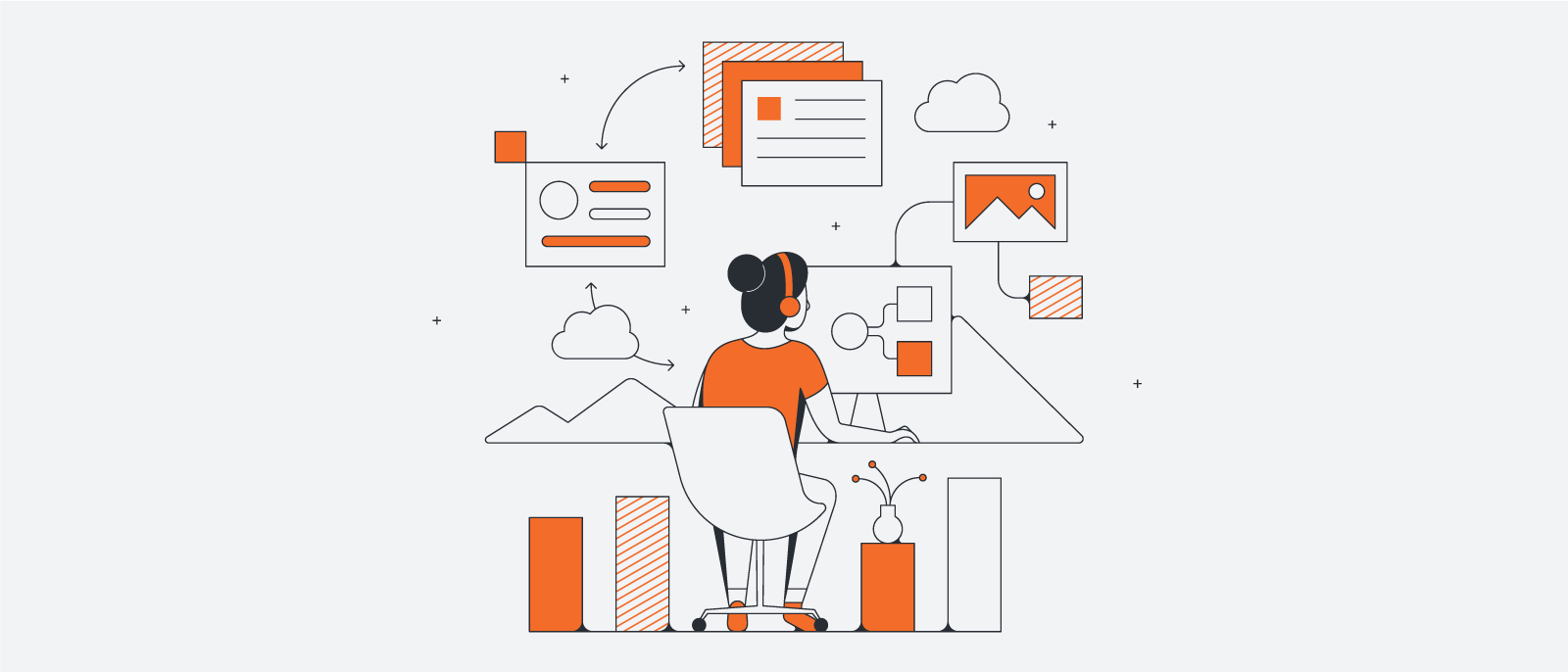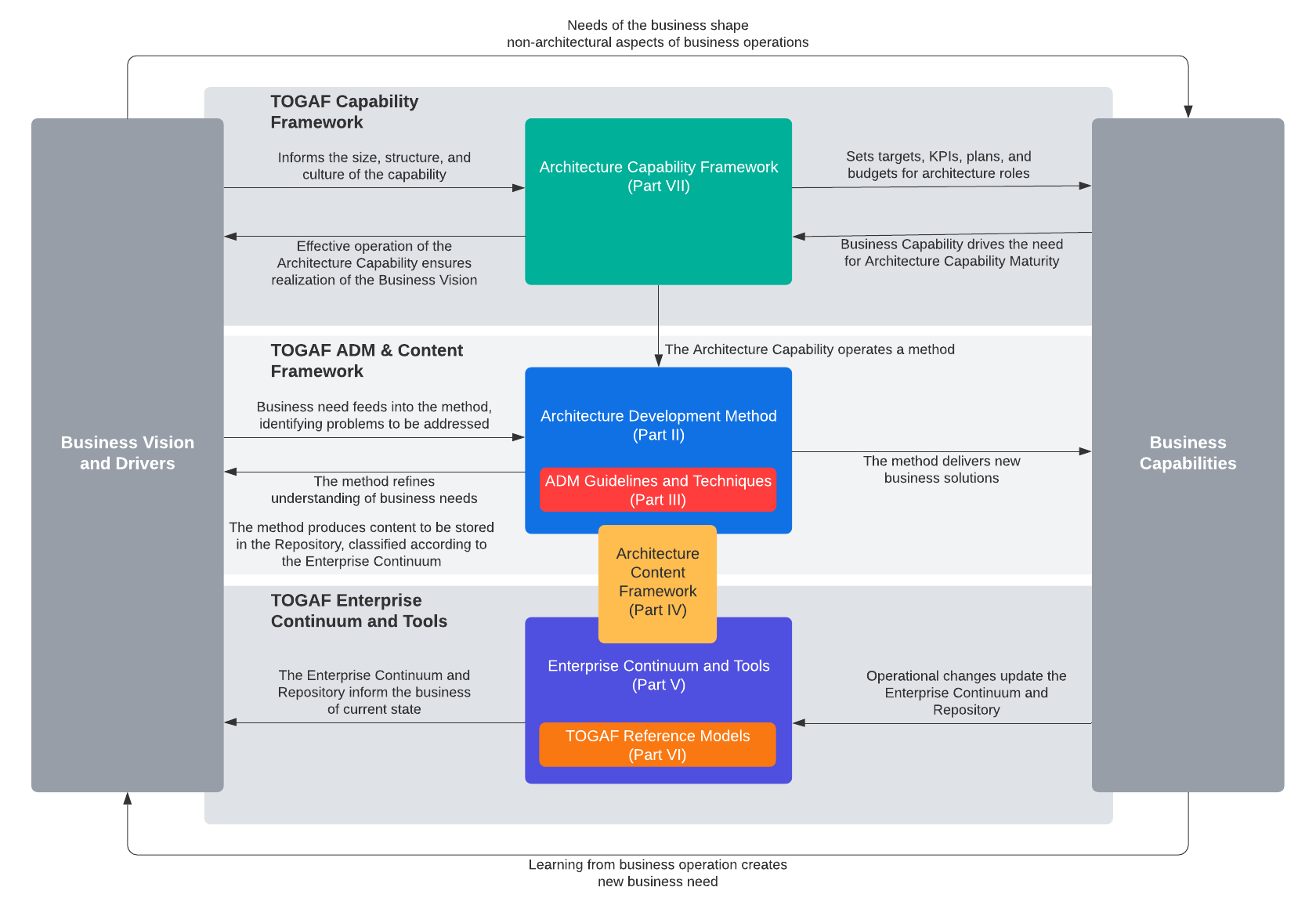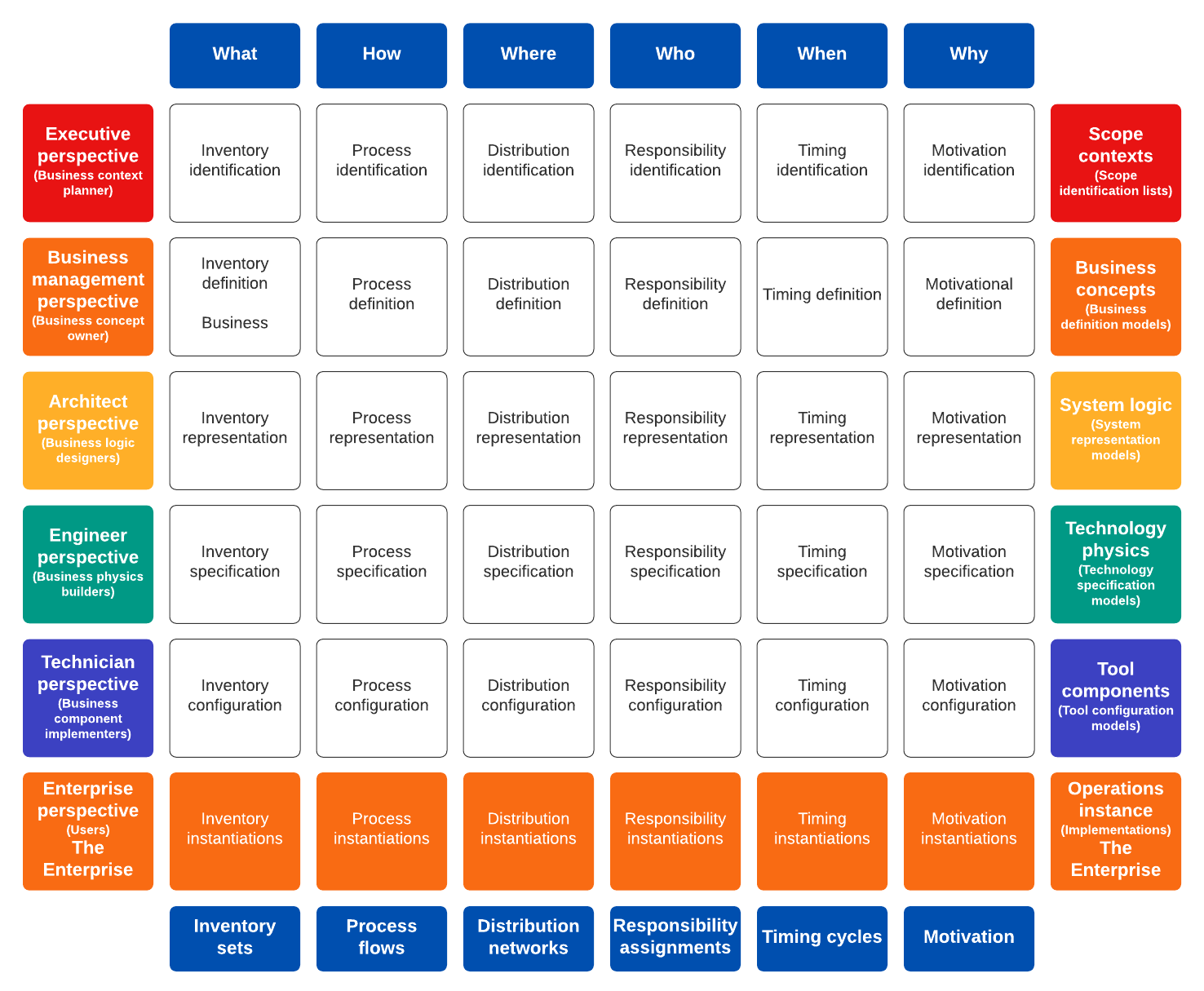
Enterprise architecture defined: Why this documentation is crucial for your business
Lucid Content
Reading time: about 7 min
Topics:
Have you traveled through a poorly designed neighborhood? The kind with a lot of twists, turns, and dead ends? Such a neighborhood or community can be frustrating and difficult to navigate—what seemed like a simple trip can take miles longer.
Similarly, if your company hasn’t mapped out the relationships between information, business, and technology through enterprise architecture, your employees may find it difficult to collaborate, establish efficient processes, and align projects with business strategy.
A successful enterprise architect should be able to plan, design, build, and maintain a system that is easy to navigate, meets the needs of multiple teams and organizations, and is scalable to accommodate future company growth.
What is enterprise architecture?
The concept of enterprise architecture (EA) was born in the ’60s at IBM from Business Systems Planning methodologies documented by Dewey Walker.
In the ’80s, companies started to depend more on computers and technology in the workplace. John Zachman, a business systems planning consultant for IBM, saw a need “to use some logical construct (or architecture) for defining and controlling the interfaces and the integration of all of the components of the system.” In 1987, Zachman published A framework for information systems architecture to help companies implement long-term plans for integrating new and rapidly changing technologies.
Similar to architecture’s role in city planning for developing new communities, EA is used to plan, design, and build the technological infrastructure that is needed to successfully execute business strategies. It is a blueprint of an organization’s structure and operation that helps to determine the hardware, software, programming, networking solutions, and human resources needed to achieve current and future business objectives.
Enterprise architecture looks at a company’s mission, stakeholders, customers, networks, and data to improve processes in the following ways:
- Analyzing business processes to discover areas that need change
- Developing and implementing improved procedures to be used across the enterprise
- Managing continuous change with clear documentation (including visual documents such as flowcharts, org charts, system diagrams, and so on)
- Opening the lines of communication which should lead to better company-wide decisions
How enterprise architecture has evolved in the digital era
Traditionally, EA has focused on technology and solutions that were valuable to enterprise architects so that they could keep systems running efficiently for employees to complete their jobs. In the digital age, that traditional approach doesn’t work.
To be competitive, an enterprise architecture strategy needs to focus on business outcomes—solutions that are valuable to senior management and that respond to specific business needs.
In the digital era, the lines between the digital and physical worlds have been blurred. Businesses focus on agility, customer experience, and fast response. An enterprise architect needs to design flexible, digital EA strategies that address agility, cloud computing, artificial intelligence, IT, machine learning, Internet of Things, continuous improvement, smooth integration, and so on. Digital EA should bring all of this together and tie it to business outcomes.
Do companies need an enterprise architecture strategy in the digital age?
Traditional EA is often seen as a long-term structured and rigid framework. In an agile environment, a company’s survival often depends on how well and quickly employees can react, adapt, and adjust to rapid change. The enterprise architecture framework is often seen as too inflexible and a hindrance to the aggressive deadlines that agile teams have to meet.
Does that mean that EA and agility are mutually exclusive? Hardly.
As companies work toward digital transformation, they increasingly see a need for talented enterprise architects who:
- Understand the company’s complete business structure and how it works.
- Create and maintain enterprise maps as visual aids for planning the route for business and technology changes.
- Reduce complexity and align IT strategies, technologies, and processes with business strategies and output.
- Integrate user/customer needs with technologies and processes.
- Ensure that technologies, processes, and procedures are used consistently across all business units and departments.
To be adaptable and responsive to change, employ a team of architects who can design a digital enterprise architecture that focuses on customer experience, short development cycles, products instead of projects, and business scenarios and modeling.
Benefits of enterprise architecture
The following are some of the benefits of employing an enterprise architecture strategy:
- Strategic business overview: EA works as a bridge between business operations and IT systems, providing a complete overview of how the business is structured and how it operates within the IT infrastructure. Visual diagrams, charts, and maps provide crucial insights that minimize miscommunication and help managers make better decisions.
- Less complexity: EA encourages an outcome-focused approach to increase efficiency, lower costs, foster cross-functional collaboration, open lines of communication, create a more flexible workforce, streamline organization, reduce duplication and redundancy, and ultimately improve business productivity.
- More standardization and flexibility: When done correctly, EA ensures that all teams are on the same page working toward the same business outcomes. This makes it easier to manage multiple business units, maintain optimal productivity, and offer better and more efficient software support.
- Increased security: Because enterprise architecture provides a blueprint to the entire structure and operation, it is easier to see where there may be potential security breaches. Deploying updates and patches is easy and causes no business interruptions.
- Faster adaptability: Well-designed EA promotes innovation, encourages transformation, and eases implementation. Companies can respond more quickly to sudden changes in customer behavior and shifts in the industry.
Resources to begin creating your enterprise architecture
There are several tools and resources available to help enterprise architects and other IT stakeholders to plan, design, visualize, and maintain an EA for organizations of any size.
Use an enterprise architecture framework
Take a look at these four major enterprise architecture frameworks that have been in use by various companies in the past couple of decades.
Open Group TOGAF
The TOGAF is a common enterprise architecture framework used by businesses throughout the world. The standard is developed and maintained by members of The Open Group. The TOGAF can be used for free by any organization that is looking to develop its own EA. There is extensive documentation that explores EA concepts, discusses development methods, and describes how to integrate TOGAF with other frameworks.

Zachman framework
Named for its creator, John Zachman, this framework uses a structured matrix as a means to view and categorize an enterprise. The framework consists of a 36-cell matrix, with each cell focusing on a different perspective (such as business owner, planner, designer, and so on). This matrix gives EA professional insights into the company's assets and how various components of the enterprise are related. This information can help companies be more agile and help to make better decisions.

Federal Enterprise Architecture framework
This is a framework that was developed by the U.S. Federal Government. It is used to organize many different government agencies and organizations. It is a combination of TOGAF and the Zachman framework. The framework uses five reference models (business, service, components, technical, and data) to determine the best way to install enterprise architecture.

Gartner framework
This framework is a methodology that focuses on business, information, and technology and relies on constant adaptation to changing environments. It keeps companies agile and flexible so they are able to address any problem that comes along.

Visualize enterprise architecture with Lucidchart
Maps are useful to city planners for studying local topography when deciding where to place a new building. Like a city planner, an enterprise architect can gain insight and plan for growth by creating and analyzing studying diagrams to get a visual overview of the current EA layout.
In Lucidchart, businesses can visualize their enterprise architecture easily and share it across the company. Our visual workspace has even integrated with LeanIX to help enterprise architects to be more flexible and collaborative when planning and designing system models and mapping out business processes.
It’s very hard to predict what the next technology will be that will cause companies to adapt quickly to a new way of doing business. To paraphrase a concept of Darwinism, companies either adapt or they die.
To be successful today and in the future as business and roles continue to change, it is important to have professional enterprise architects who can develop and design EA frameworks that will keep growing businesses agile, collaborative, focused on customers, and responsive to rapid change.

Find out how the new Lucidchart and LeanIX integration enhances collaboration and architecture modeling to help enterprise architects find actionable solutions.
Learn moreAbout Lucidchart
Lucidchart, a cloud-based intelligent diagramming application, is a core component of Lucid Software's Visual Collaboration Suite. This intuitive, cloud-based solution empowers teams to collaborate in real-time to build flowcharts, mockups, UML diagrams, customer journey maps, and more. Lucidchart propels teams forward to build the future faster. Lucid is proud to serve top businesses around the world, including customers such as Google, GE, and NBC Universal, and 99% of the Fortune 500. Lucid partners with industry leaders, including Google, Atlassian, and Microsoft. Since its founding, Lucid has received numerous awards for its products, business, and workplace culture. For more information, visit lucidchart.com.
